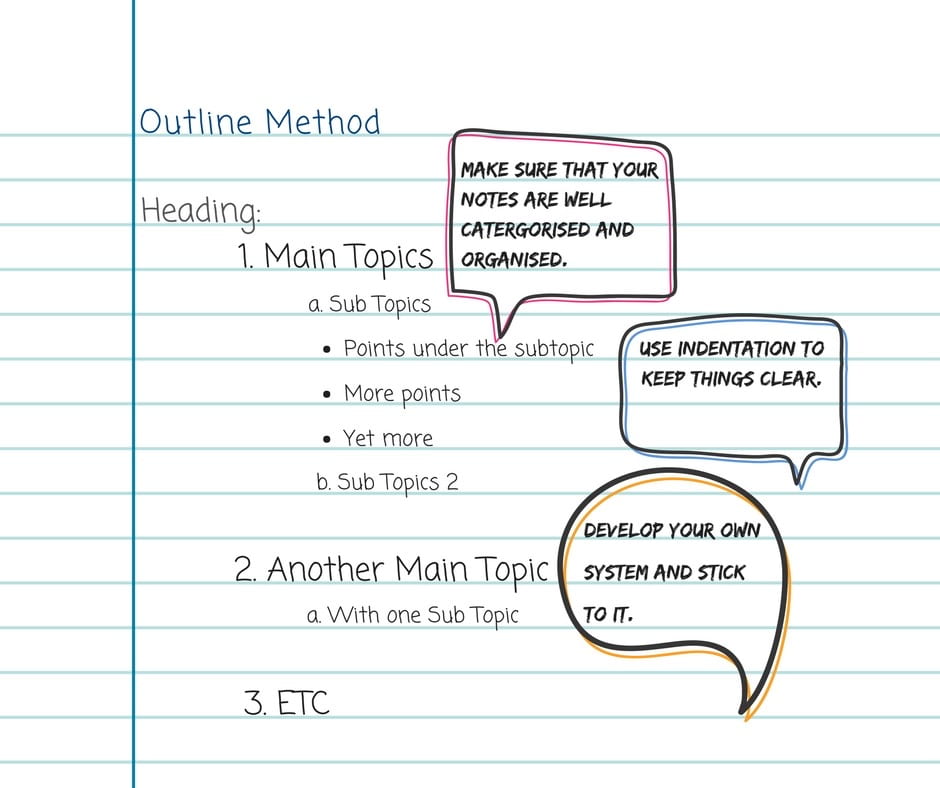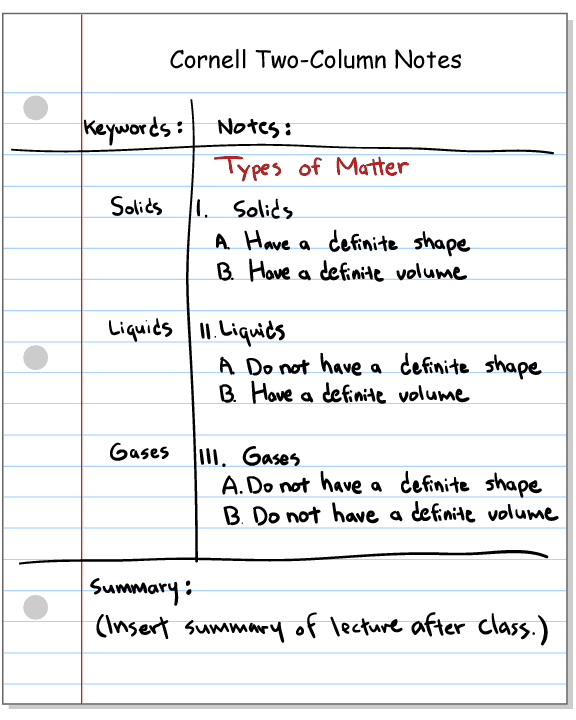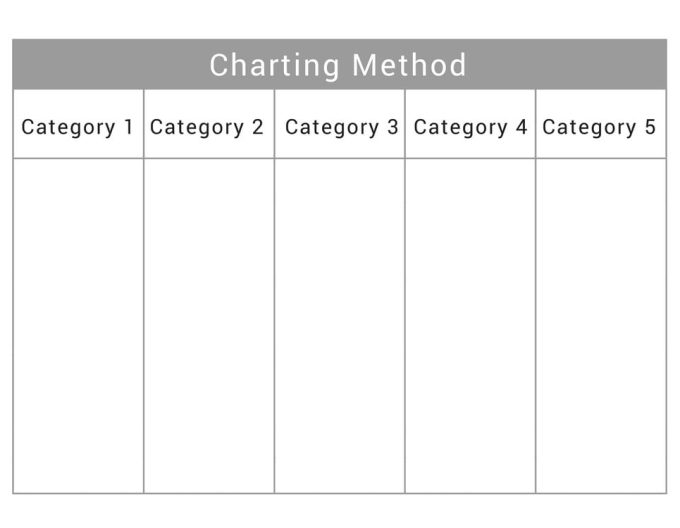Note-taking methods
There are a variety of study methods and techniques that suit different styles of learning.
- = equals
- =x does not equal
- > greater than/increasingly
- cf compared with
- ~ leads to
- viz namely
- < less so
- shld should
- i.e.that is
- e.g. for example
- cld could
- wd would
The Outline method

The outline method uses a hierarchy based approach using headings and bullet points to create a structure of data. This method is advantageous when learning about a detailed topic.
Pros:
- Allows notes to be neatly organised
- It is simple to see the relationship between topics and subtopics.
- It is easy to turn points into study questions
Cons:
- Not ideal for formula-heavy subjects
- Ill-suited for lectures that do not follow a structured layout when using paper notes.
The Cornell method

The Cornell method helps to organise class notes into easily digestible summaries. This method is effective because the main points, details, study cues and summary are all located in one place.
Pros:
- Notes are neatly organised, summarised and easy to review.
- Allows you to pull out mayor ideas and concepts
Cons:
- Pages need to be prepared before the lecture.
- Requires some time for reviewing and summarising key concepts.
The Charting method

The Charting method is an ideal note-taking technique for information which contains facts and statistics. This information is organised into several columns, similar to a spreadsheet.
Pros:
- Information follows a clear structure.
- Highlights the key pieces of information for each topic.
Cons:
- Can be time consuming.
- Not suitable for lectures where the content is not clear beforehand.
- Does not work for information that is difficult to organise.